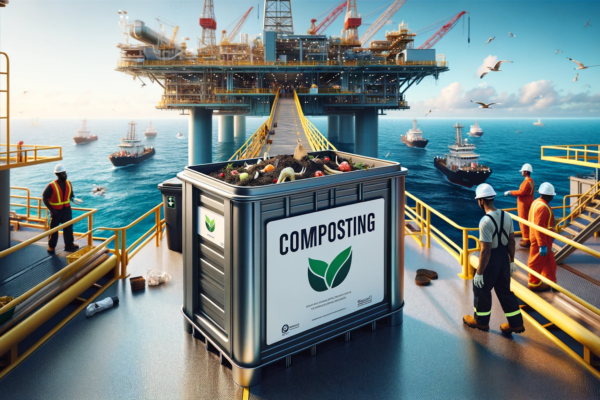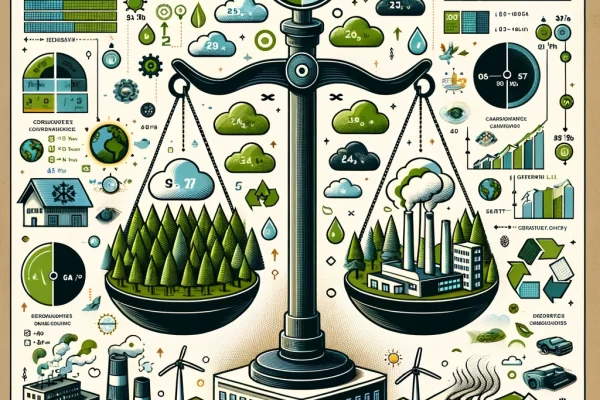The Shaky Pillars of California’s Renewable Natural Gas Initiative
The Shaky Pillars of California’s Renewable Natural Gas Initiative
In recent years, Renewable Natural Gas (RNG) has been hailed as a cornerstone of the green energy transition, particularly within the transportation sector. Its rapid growth, fueled by generous policy incentives and massive private investments, has positioned RNG as a critical player in the United States’ efforts to reduce greenhouse gas emissions. However, a comprehensive report titled “2030 California Renewable Natural Gas Outlook” by the International Council on Clean Transportation (ICCT) presents a sobering assessment of RNG’s potential to contribute to California’s environmental goals by 2030. This article delves into the report’s findings, shedding light on the limitations, challenges, and the real impact of RNG within the state’s energy landscape.
The Evolution of RNG: Sparking Hopes for a Cleaner Energy Future
The Growth of Renewable Natural Gas
Renewable Natural Gas has seen a remarkable surge in the United States, driven by federal and state policy incentives aimed at subsidizing its use in heating, power, and transportation. California, in particular, has made significant strides, with fleet operators and jurisdictions investing heavily in natural gas-fueled vehicles, intending to power them with RNG. This push towards RNG is part of a broader strategy to meet the state’s ambitious low-carbon and air quality standards.
Policy Incentives and RNG Expansion
The expansion of RNG has been significantly supported by policies such as the Low-Carbon Fuel Standard (LCFS), which incentivizes the production and use of low-carbon fuels. The LCFS has made RNG one of the largest methods of compliance, highlighting the state’s commitment to reducing carbon emissions through innovative energy solutions.
The Hard Truths of RNG’s Potential by 2030
Limited Supply and High Costs
The ICCT report provides a critical analysis of RNG’s potential as a low-carbon fuel in California by 2030, taking into account resource availability, production cost, and climate performance. One of the report’s key findings is the limited supply and high costs associated with RNG. It estimates that cost-viable volumes of RNG could displace, at most, 8.9% of heavy-duty fuel demand in California by 2030. This starkly contrasts with the initial optimism surrounding RNG’s capacity to significantly reduce carbon emissions in the transportation sector.
Environmental Performance and Market Opportunities
The environmental performance of RNG, particularly in terms of life-cycle emission reductions, may have been overstated due to outdated assumptions. The report suggests that many RNG pathways certified under California’s LCFS are assigned low or negative life-cycle emissions values based on the assumption that methane emissions are avoided. However, with ongoing revisions to California’s climate policies, the actual benefits of RNG could be less than previously thought.
The Overestimated Benefits of RNG
Revising Climate Policies and RNG’s Impact
The potential revision of climate policies, including a 40% reduction target in statewide methane emissions by 2030, poses significant implications for RNG’s environmental benefits. The report finds that dairy RNG, for instance, would release 30-40 grams of CO2-equivalent per megajoule, which is around half of the life-cycle GHG emissions of natural gas. This calls into question the effectiveness of RNG in achieving the state’s climate goals.
The In-State RNG Dilemma
Competitive Implications for In-State Producers
Updating carbon accounting in the LCFS could increase the competitiveness of in-state RNG producers by reducing the potential of cost-viable RNG produced outside California. However, this would not significantly affect the economics of in-state RNG production, nor would it impact landfill gas projects and small-scale farms that treat waste in pasture or solid storage applications. This highlights the complex dynamics within the RNG market and the need for careful policy consideration to support the state’s environmental objectives.
Natural Gas Vehicles: Not the Climate Saviors We Hoped For
Limited Climate Benefits Compared to Diesel
One of the report’s most striking findings is the limited climate benefits of natural gas vehicles over diesel. It estimates that a natural gas tractor-trailer could generate, at most, approximately 11% lifetime GHG savings relative to a diesel tractor-trailer, even when assuming California achieves its maximum in-state RNG potential. This is a far cry from the transformative impact that RNG was expected to have on the transportation sector’s carbon footprint.
The Superiority of Battery-Electric Vehicles
In contrast, the report estimates that a battery-electric tractor-trailer generates approximately 57% GHG savings over its lifetime compared to a diesel tractor-trailer. This significant difference underscores the potential of battery-electric vehicles as a more effective solution for reducing GHG emissions in the transportation sector, challenging the notion of RNG as a panacea for California’s environmental challenges.
The Path Forward: Navigating the Complexities of RNG
Policy Recommendations for a Sustainable RNG Future
The ICCT report offers several policy recommendations to maximize the environmental benefits of RNG while acknowledging its limitations. These include revising carbon accounting methods to reflect the latest scientific understanding and regulatory changes, as well as prioritizing the development and deployment of zero-emission vehicle technologies over RNG.
A Realistic Assessment of Alternative Fuels
As California continues to lead the way in environmental innovation, it is crucial to maintain a realistic perspective on the potential and limitations of alternative fuels like RNG. The state’s ambitious climate goals require a multifaceted approach that balances the pursuit of innovative energy solutions with the need for practical, effective strategies to reduce GHG emissions.
Conclusion
The “2030 California Renewable Natural Gas Outlook” report by the ICCT provides a comprehensive and critical analysis of RNG’s role in California’s energy future. While RNG has been touted as a key component of the state’s green energy transition, the report’s findings highlight the need for a more nuanced understanding of its potential and limitations. As California continues to navigate the complexities of reducing its carbon footprint, the insights from this report will be invaluable in shaping policies and strategies that truly advance the state’s environmental objectives.




